I have a lot of nostalgia for the early ‘80s, as I was coming of age, but I don’t wear rose colored glasses for the time. We were two years into Reaganomics, it was a difficult time to be different, and the threat of nuclear war felt very real. But it was also the golden age of Home Box Office.
When my grandma finally got cable, my uncle Paul slipped the installer a hundred, and we had free HBO for years. Much of my cultural education flowed from the boob tube, and I never would have seen Billy Jack or Vice Squad or Alien at the tender age of ten if it weren’t for this blatant act of bribery. It was a great time for animated films. After Walt Disney’s death, the studio lost focus, and while Robin Hood—the fox who launched a thousand furries—has its defenders, it is a weak, overly folksy film that tries too hard and feels like a bad ‘70s TV movie, with its thumbsucking King Richard and confusion over whether it wants to be a story about Reynard the Fox, Chanticleer the rooster, or in the end, Robin Hood. It was all three before they settled on the last, and the confusion shows. (You can read about it in this Twitter thread by Christopher Polt, if interested.) We all know the story, and except for a few well-animated scenes, there’s not much storytelling.
A lot of contenders came for the Disney crown: Ralph Bakshi was doing his thing, and taking on Tolkien; Nelvana in Canada gave us the post-apocalyptic Devil and Daniel Webster rock ‘n roll reboot, Rock ‘n Rule; the bunnies of Watership Down traumatized a generation; and Don Bluth, who began an assistant animator on Sleeping Beauty, left Disney to strike out on his own with a bunch of other Disney alumni, and their first feature film was The Secret of NIMH. I watched it last night, and I was surprised at how well it held up. Based on a beloved children’s novel by Robert O’Brien, Mrs. Frisby and the Rats of NIMH, it’s a scan 82 minutes and changes a bit of the story with some silly fantastical elements, but is otherwise true to the book about a mouse who needs to move her family out of the fields before plowing day, when her littlest child, Timothy, is stricken with pneumonia and can’t get out of bed.
Bed? Yes, well. Mrs. Brisby—name changed to avoid angering the Wham-O corporation, who zealously protect their Frisbee trademark—also wears a cape, and gets medicine from cranky wizened mouse-apothecary Mr. Ages. These rodents aren’t like the ones in your average farmyard. The Rats of NIMH were experimented on at The National Institute of Mental Health, and are much smarter than your average rat nest denizens. They steal electricity from the farmer, to power lights in their nest beneath the rose bush. It’s a great children’s book, and I highly recommend reading it if you like Charlotte’s Web and other talking critter stories for a diversion.
Don Bluth and company went all out; the backgrounds of the movie are stunning, and the voice actors well-suited. Mrs. Brisby is voiced by Elizabeth Hartman, who starred in A Patch of Blue with Sidney Poitier, and her performance, and how she is animated, are really one of the best portrayals in an animated film. Even compared with Studio Ghibli. But more on that later. The comic relief is provided by Dom DeLuise as Jeremy the crow, and John Carradine brings his stentorian tones to the Great Owl to lend gravitas to a story about talking rats. Jerry Goldsmith scored the film, and Paul Williams sang the one song on it. No singing and dancing animals here, another departure from the Disney formula, for which we can all be thankful. The theme, “Flying Dreams,” is quite catchy, and the leitmotif is piping in my ears as I write this.
The story is a little complicated for a children’s movie, but all the better to captivate. Widowed Mrs. Briz can’t move Timothy, as he has pneumonia; she makes friends with a clumsy crow, when she saves him from the farmer’s cat, Dragon. He takes her to see the Great Owl, the wisest of the animals they know, to see what she must do. And he tells her she has to move the whole house. Not something even a hundred mice could do.
Or rats, for that matter. He tells her to visit the rats who live under the rose bush. But how will they move her house? “They have ways,” he says. He’s mysterious without being too obscure. He says to move the house “to the lee of the stone,” which is mysterious to a little mouse, and to children. She visits the rose bush, and after dodging Brutus, the zealous guard, she chances on a rat council meeting where the nest is arguing over whether to leave the nest for a safer place in the woods, “Thorn Valley,” where they won’t have to steal, or worry about getting gassed out of their nests. A devious rat named Jenner wants to stay, and a humorous and helpful rat Justin is on the side of moving.
The plan was hatched by Nicodemus, a sort of rat-wizard, who tells Mrs. Brisby that they will help her, because her husband Jonathan Brisby saved their lives. It’s not until here that we learn the backstory of the rats, escaping from the experiments at the National Insitute of Mental Health, which gave them longevity and intelligence. And they’ve passed it along to their fellow denizens; Mrs Briz learned from Jonathan. (We never learn her first name.) But before the rats can help move the house, she needs to drug the farmer’s cat so they are safe.
The same cat who ate her husband. To help steel her for the challenge, Nicodemus gives her a sparkling amulet that glows with fire. This isn’t in the book, but it’s lovely to look at on-screen. Jeremy the crow is especially hypnotized by it, loving shiny things as his corvid kind does. Mrs Brisby takes on the challenge, and after a brief captivity in a birdcage—which she escapes on her own, being a clever little mouse imbued with great agency—she overhears a phone call at the farmhouse: NIMH is coming. She runs to the rats, and finds them operating a complex pulley system to move her cinder block house, a marvel of rodent engineering. Undone by sabotage, the plan fails and Nicodemus is killed; there’s a breathtaking rat swordfight, and the rats are about to take Mrs. Briz’s warning and flee to Thorn Valley, when her house begins to sink into the mud.
The animation is quite beautiful; the Disney rogues show their artistic chops, even making even the title sequence bright and beautiful, if eerily reminiscent of The Thing. But what really struck me, watching it as an adult, is how much Elizabeth Hartman put into her performance as a mother mouse desperate to save her children. I mean, just listen to her breathless struggling as Justin the rat holds her back from diving into the muck as her cinder block house disappears into the mire:
The film adaptation was up against E.T. in theaters and flopped, but me and my sister—and countless others—discovered it on home video. When I mentioned on the Twithole that I was watching this one, one friend told me that he’s seen it at least 25 times, and that he and his family constantly quote it! I referenced “the sparkly” in Fox Child Running, when Mags the magpie steals a shiny. It’s hardly forgotten, and according to Wikipedia there are several attempts to reboot it as a part live-action film or a series, both of which sound horrible. I wouldn’t mind a retelling that hewed closely to the book, as the idea of intelligent rats is fascinating, and the magic of the sparkly took away from it. I had two feeder rats as pets for a time; there are “fancy” rat breeds, but it felt more humane to rescue two rats from being devoured by snakes. They take to being pets, as they are quite affectionate and friendly, and mine would perch on my shoulder and wash their faces, or take a nap in my shirt. I never trained them to pee in one corner of their cage, much less read, but they were good company and cheap to feed.
Don Bluth and company were hot for a time; they animated the video game Dragon’s Lair, and after the flop of NIMH, they made An American Tail, which gave us another plucky immigrant mouse, and the song “Somewhere Out There”; and also All Dogs Go to Heaven, Anastasia, and The Land Before Time. Not a bad run. They also animated the sequences in Xanadu, starring Olivia Newton-John and Gene Kelly, which… isn’t as terrible as some say, but is still best viewed through a gimlet eye of camp. (Preferably a double gin gimlet.) The last Don Bluth movie I saw in theaters was Titan A.E., a space opera ahead of its time, and reminscient of Cowboy Bebop, Firefly, and other popular films and shows that hit with fans just a year or two later.
I never knew who voiced Mrs Brisby until I looked it up this week. Elizabeth Hartman starred in A Patch of Blue, with Sidney Poitier; she played a nurse in The Beguiled; and had a role in the memorable TV movie, Walking Tall. (She even had a small role in the Larry Cohen wolfman spoof, Full Moon High, which is cheesy fun with both Adam and Alan Arkin, if you can find it.) Hartman struggled with depression throughout her career. She returned to stage acting and took voice roles, but The Secret of NIMH was her last. She died by suicide in 1987.
She delighted hordes of rapt children with her protrayal of a brave little mouse. A story that still can fill a viewer with wonder, if they let it into their imagination.




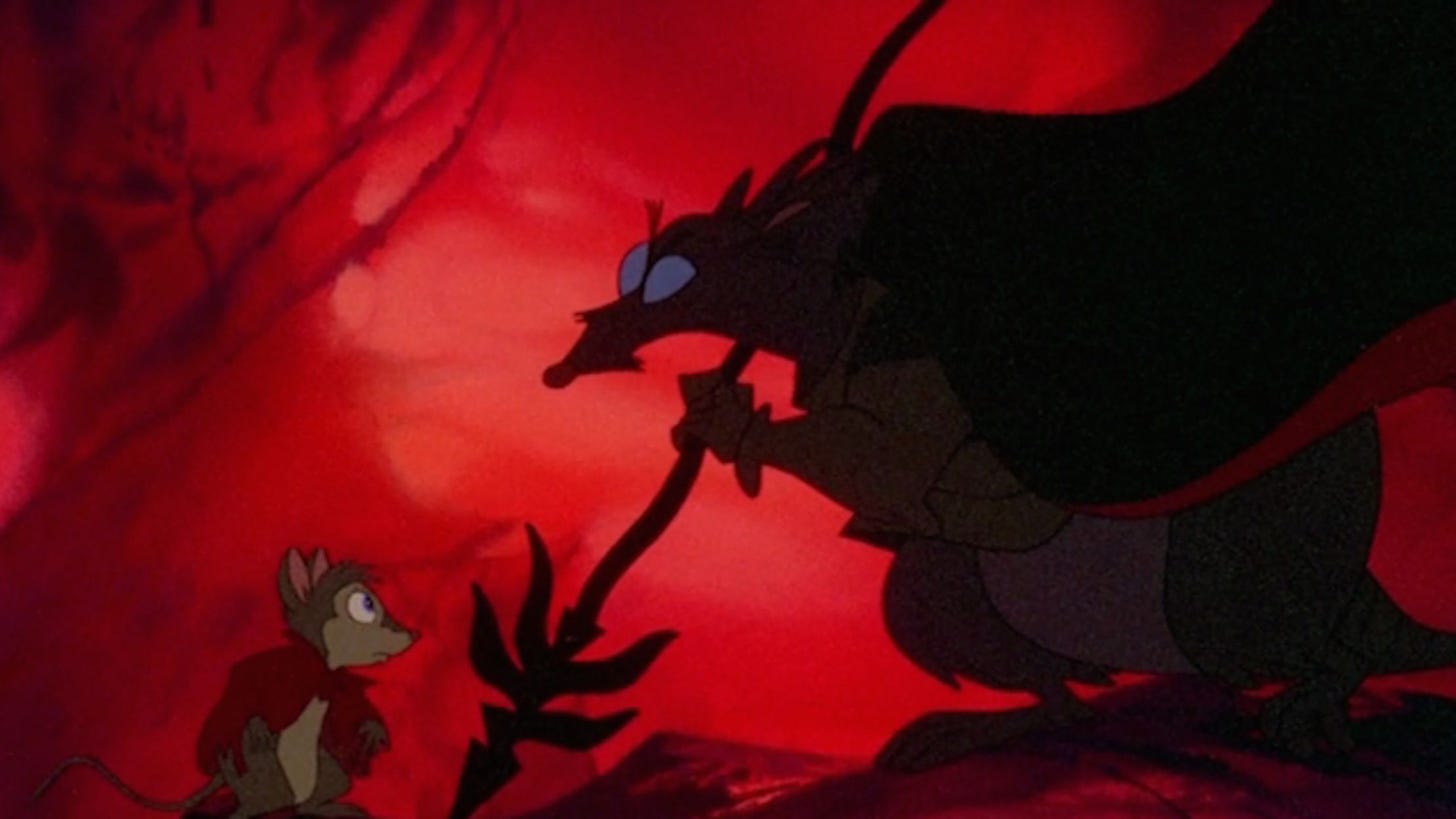
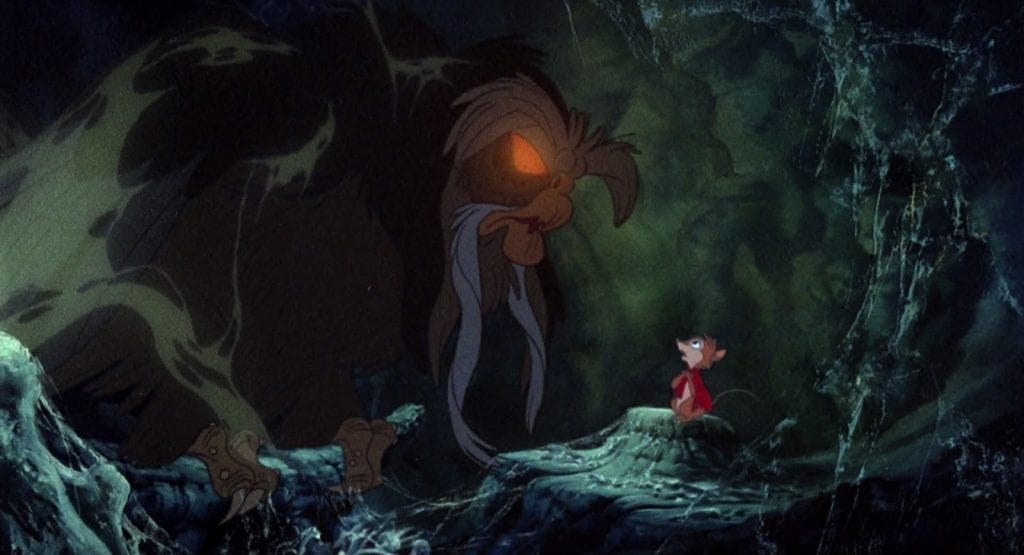
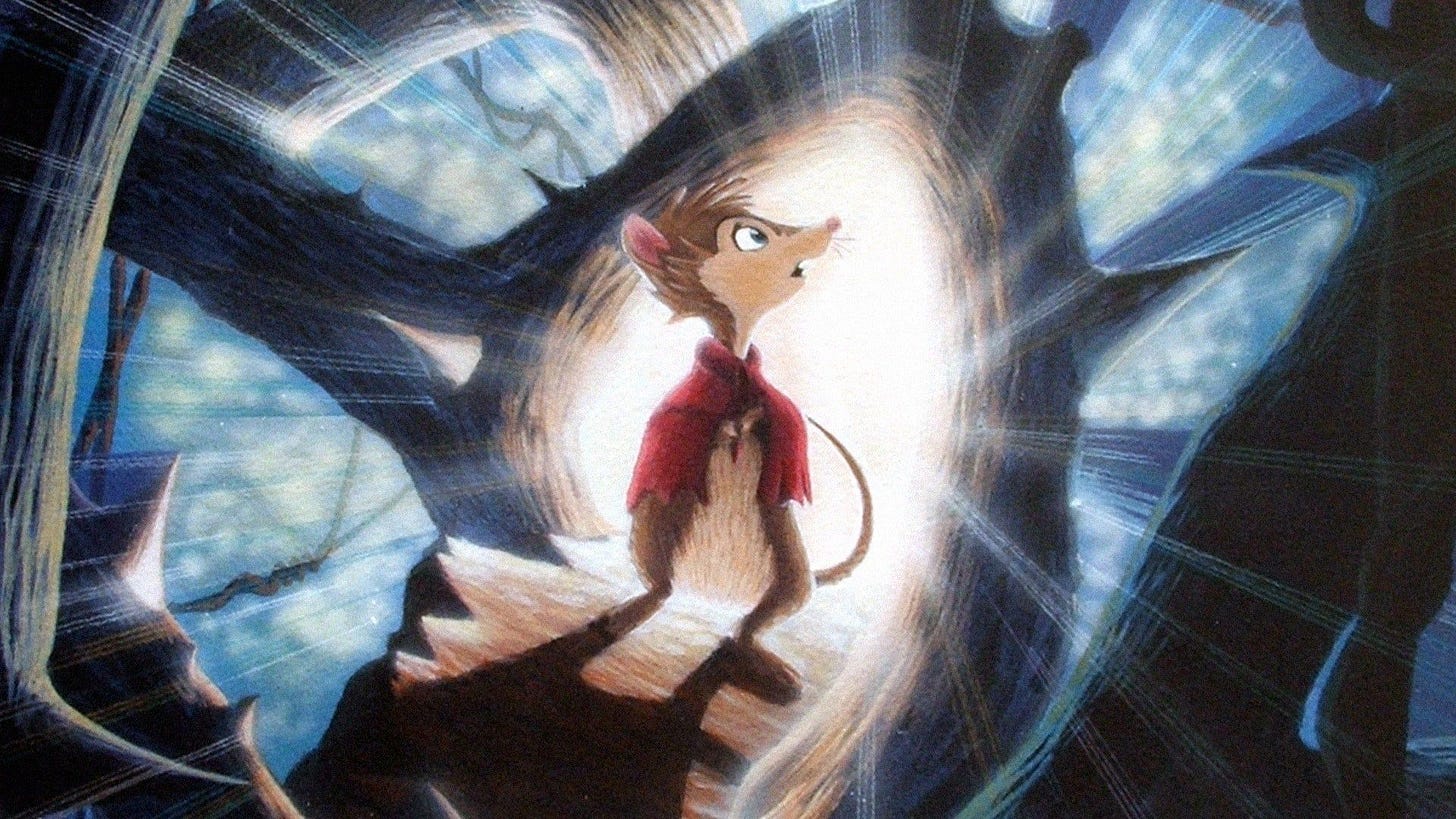
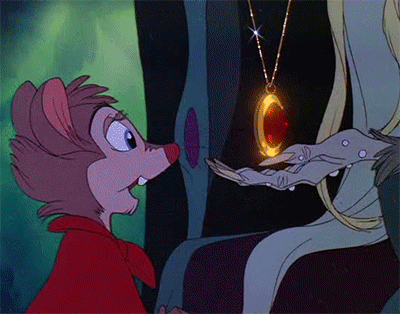
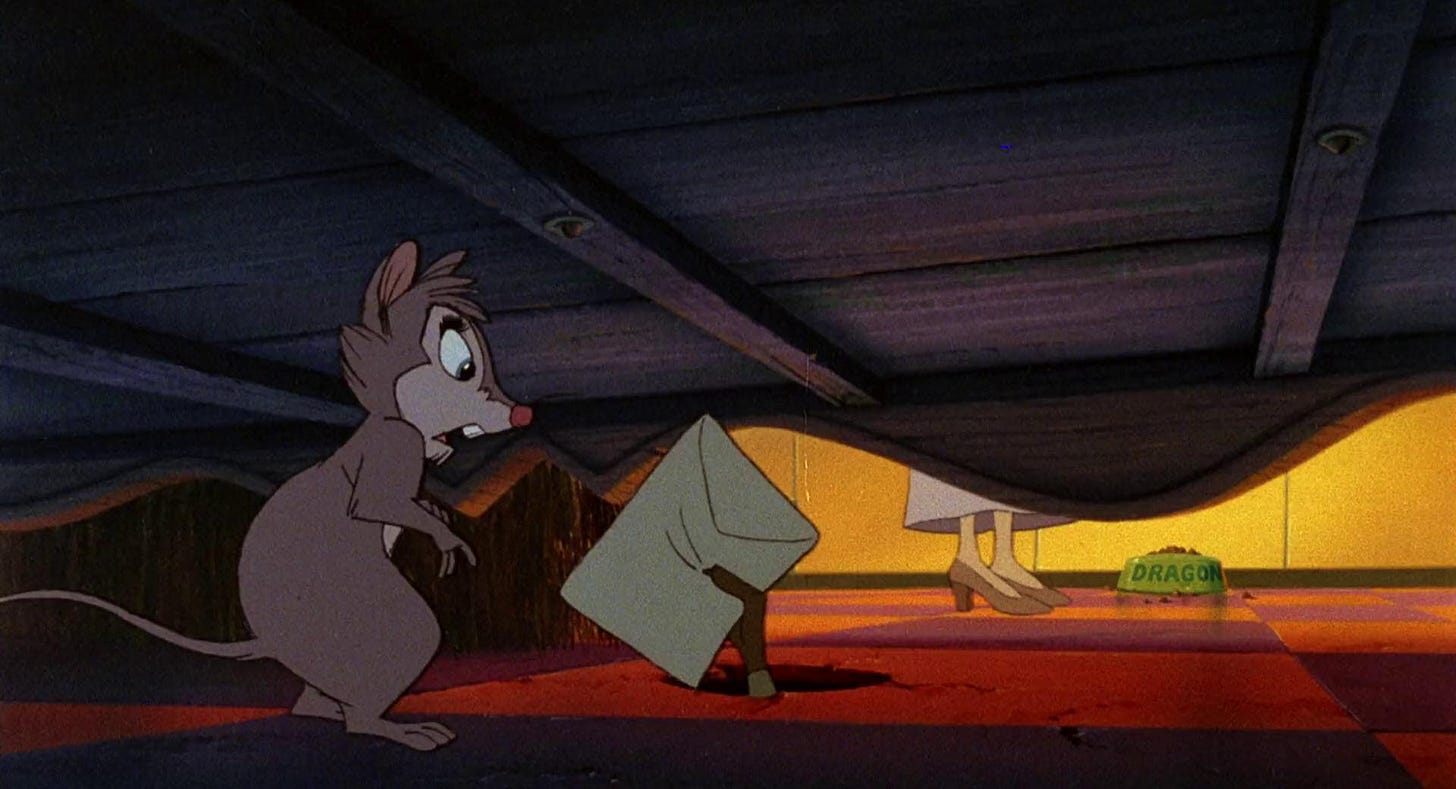
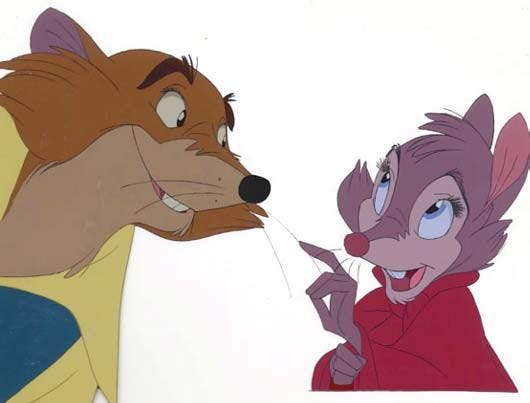
I admit to being a bit disappointed with some of the changes made in the film, but back in another century, I read this book to my four children. My oldest son (then 9) never read for pleasure at the time, but when we finished the book, he asked for it and read it for himself starting the next day. It was the start of a voracious book habit that has lasted more than 40 years.
I saw this in the theater and never since. I need to rectify that....